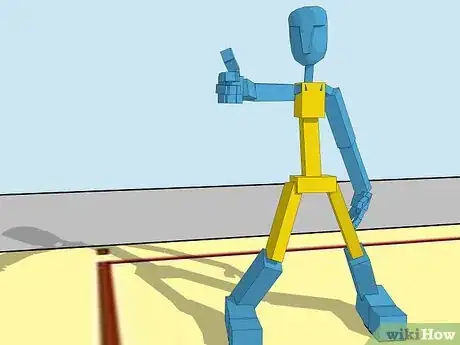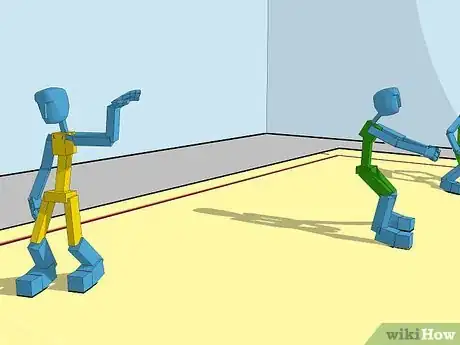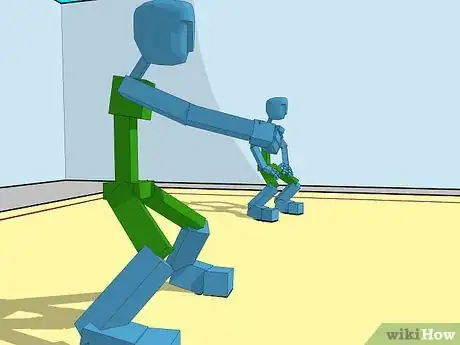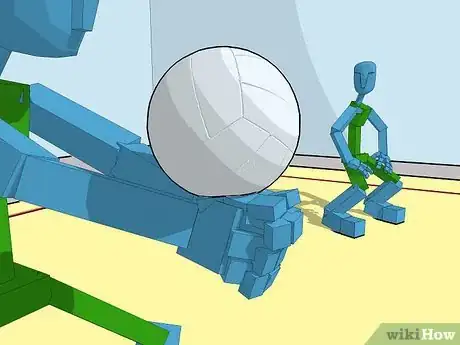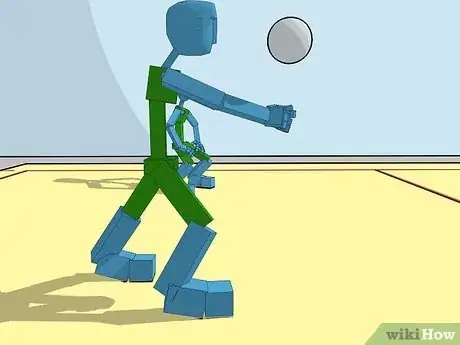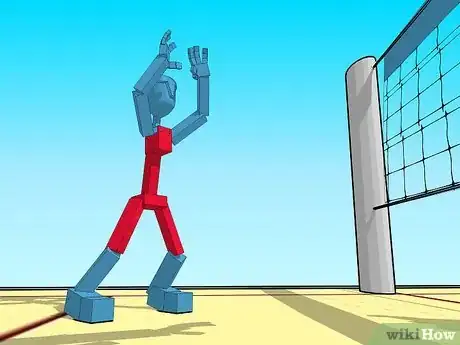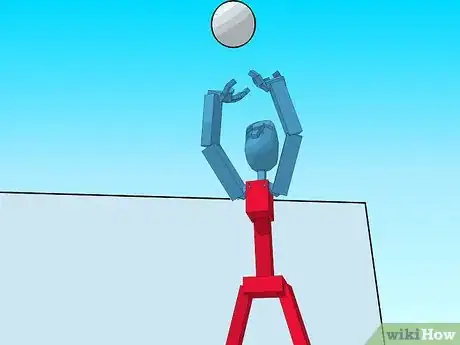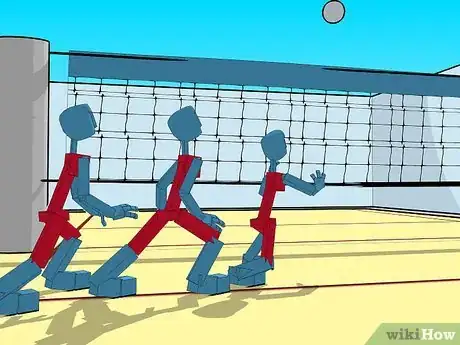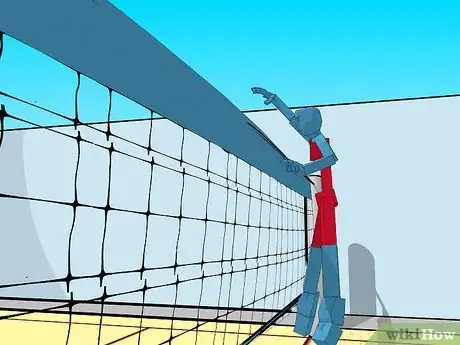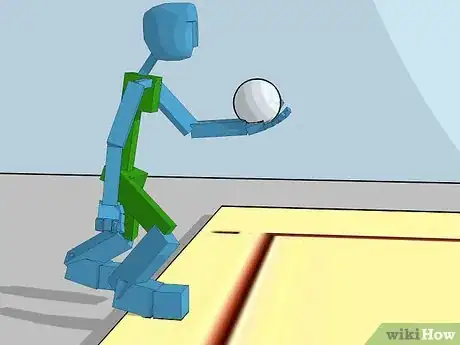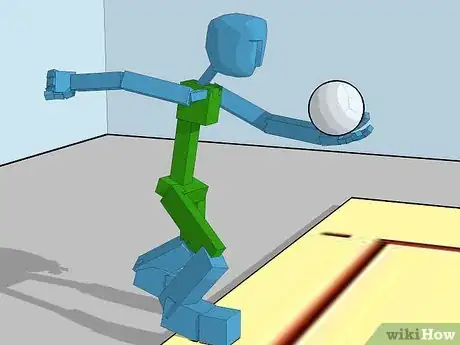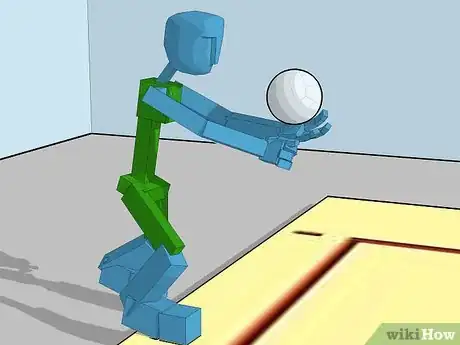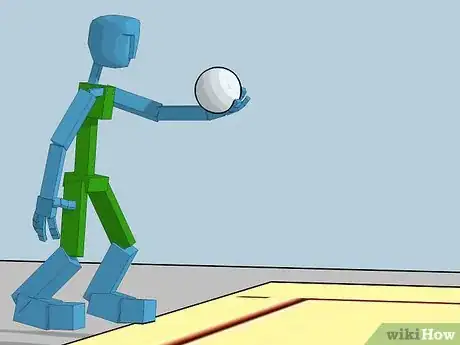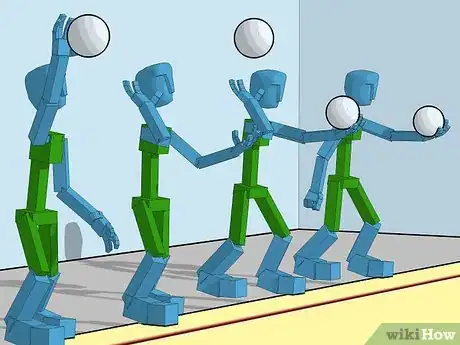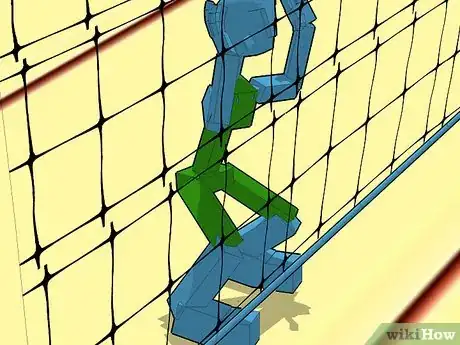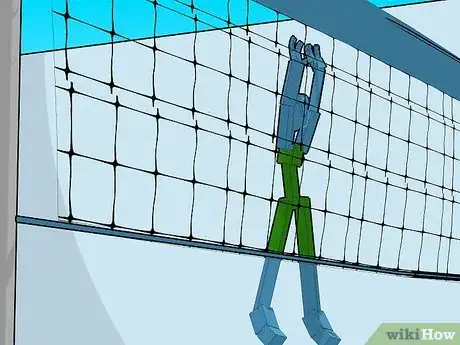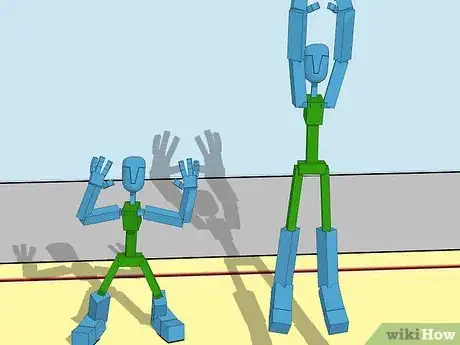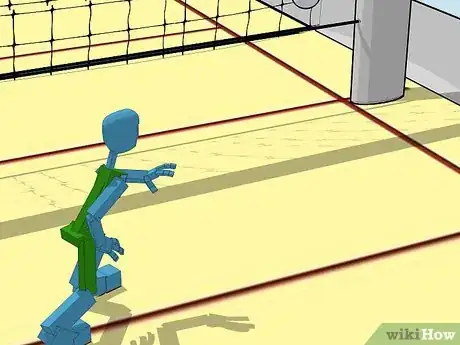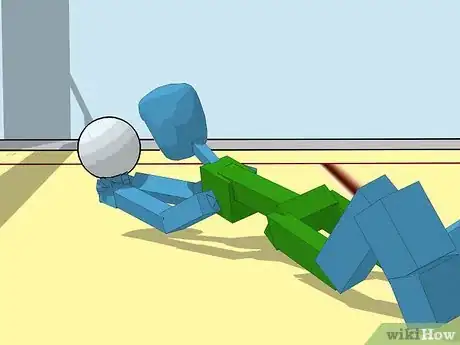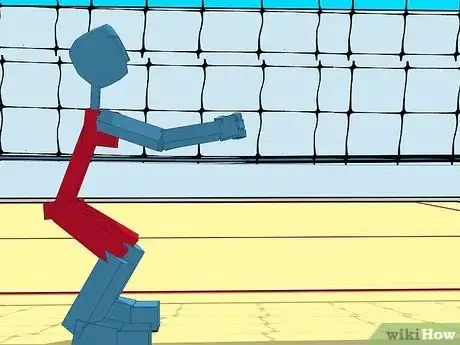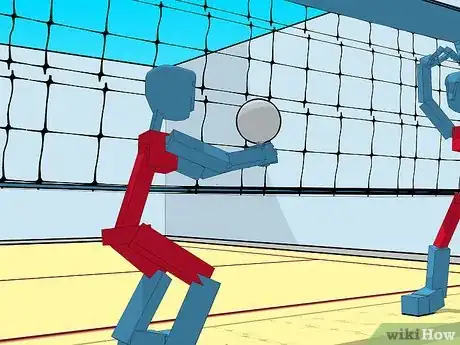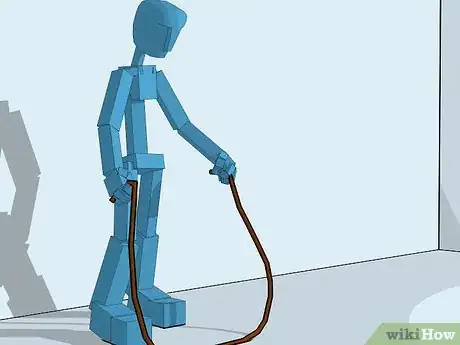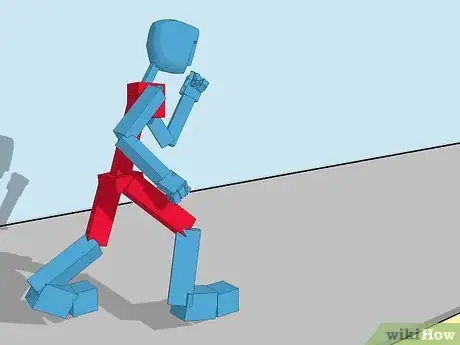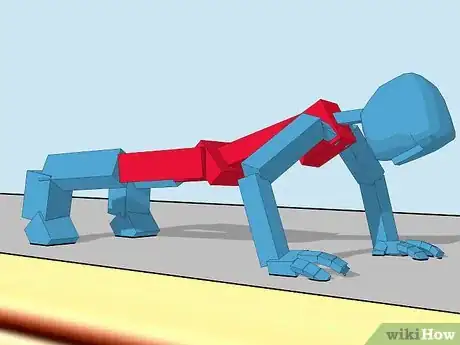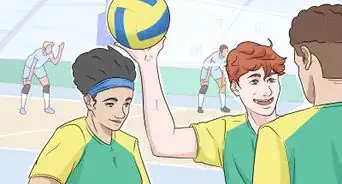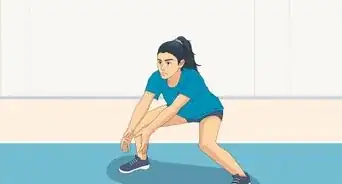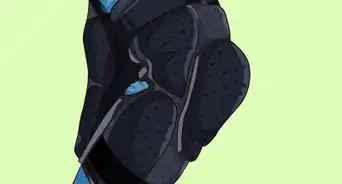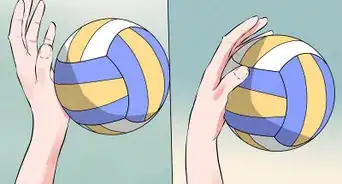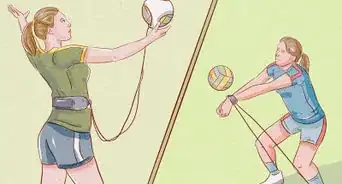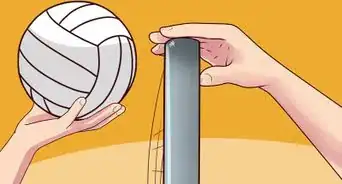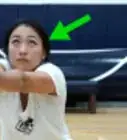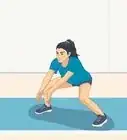X
wikiHow is a “wiki,” similar to Wikipedia, which means that many of our articles are co-written by multiple authors. To create this article, 25 people, some anonymous, worked to edit and improve it over time.
This article has been viewed 79,044 times.
Learn more...
No matter what, volleyball is the most fun sport in the world. And though it's fun watching the pros playing, we can't help but turn green with jealousy thinking "I want to be a star like them." With hard work, you can.
Steps
-
1Keep up a good attitude.
-
2Don't complain at practice. Do what the coach tells you; they know what they're doing. Even when you feel like your legs are about to fall off from all the conditioning, keep doing it. It will pay off in the long run and after all of the pain it will get easier and easier.Advertisement
-
3Practice, practice, practice. Practice at your house by bumping, serving, setting, and hitting on your wall. You can randomly do your approach and jump as high as possible to practice blocking. And give your best effort at practice; put your all in it.
Advertisement
Method 1
Method 1 of 9:
Passing or Bumping
-
1Position. To bump, you'll need to squat until it looks like you're sitting on a chair. Stick your butt out so it goes past your heels, and straighten your back. Your posture is correct!
-
2Hands and arms. Make a fist with your dominant hand. Cup your opposite hand around that one. Don't cross your thumbs, but keep them parallel to one another. Straighten your arms out. Feel the flat part of your forearms (smooth inside part). This is where the ball will make contact.
-
3How to do this move. This is one of the most crucial and most used moves in volleyball. Move your feet to square up with the ball. When it is almost touching your arms, take a step forward, hitting the ball with your arms, or platform (flat part of arms). DO NOT SWING. Use your legs to push up and out to target, and your arms should just move with them. Don't swing your arms more than 2 inches (5.1 cm). Passing may sting. An easy way to keep from stinging is to simply shrug your shoulders when you hit the ball.
Advertisement
Method 2
Method 2 of 9:
How to Set
-
1Position. To set, you'll need to lean forward a bit, but only a little. Bend your knees slightly. Be ready to push up, and straighten your legs and your power source.
-
2Hands and arms. Bend your elbows at an angle. Put your index and thumb fingers so they are almost touching their opposites. There should be a spade-type space between. Place hands so thumbs are close to the forehead's hairline.
-
3How to do this move. Your knees and limbs are bent at the above angles or amounts. When the ball comes, flick it up and forwards. Be sure to push off from your legs and ankles. This move is very difficult for some to master-so don't worry if you can't do this!
- If you're a/the setter, you play an important role and need to practice setting more than others.
Advertisement
Method 3
Method 3 of 9:
Spiking
-
1Position. This move has many positions. At the 10 foot (3.0 m) line, begin with your non-dominant foot front. Say you are right handed. Have your right foot back, and your left front. Step left, and then right left. On left, swing your arms up, as you bend. You'll need to use your legs and knees for power.
-
2Hands and arms. Swing your arms up as if blocking when you jump to hit. Swing your arm through like a crane, 'scooping' as you finish. As you hit the ball, snap your wrist down so the ball hits the floor.
-
3Do this move. Altogether, you should do this. Step Left, right left, jump like your blocking, and scoop.
Advertisement
Method 4
Method 4 of 9:
Serving: Underhand
-
1Position. Serving underhand, crouch your body down as if you were going to bump. Have your right foot slightly in front of left. Make sure you're not standing up straight.
-
2Hands and arms. Say you are right handed. Hold the ball out in front of you in your left hand. Pick a patch on the ball to hit. Make your right hand into a fist. Swing your arm back to shoulder height, and propel it forward like a pendulum. Some people prefer to hit it on the part of their arm where they bump it, because it can give more control, but it doesn't give as much power. Do what works best for you.
-
3Do this move. Crouch, aim, and propel. That was easy, right? Make sure you don't bounce, throw the ball before, then hit it (you'll take out a ceiling light). You just need to hold onto it.
Advertisement
Method 5
Method 5 of 9:
Serving: Overhand
-
1Position. To overhand serve, it is an easy, four step piece. You'll first need to have your left foot slightly in front of right foot. The rest is in the next section.
-
2Hands and Arms. Do this move. (2 part) Step 1, your position; have your left foot forward. Hold the ball directly in front of you at chest height, arm length away. Step 2, bring back your right arm like your hand is going to touch your ear. Step 3, keeping left arm straight, toss the ball up about a foot above your head. Toss it a little bit forward, but not so much you can't reach it. Step 4, step forward with right leg, and hit the ball as you step. If you aren't strong, do it with your fist instead of flat handed; some coaches don't allow their team to do it with their fist, though.
Advertisement
Method 6
Method 6 of 9:
Blocking
-
1Position. Blocking is very easy. Blockers should be cocked and ready to jump up. Generally, you should be half an arms length away, off from the net. Watch the ball and then jump. When you are in the air, do following steps.
-
2Hands and arms. Swing your arms up to get height. Hold your arms straight, hands stiff. When the ball comes over, just touch the ball, keeping hands stiff, with your palms. Even if you aren't as tall as the net, just getting a glimpse of an emerging body will scare them and throw the opposing team off. Do this every play, even for just a bump.
-
3Do this move. Keep your hands up at your shoulders. After you jump, penetrate the net with your hands and hold stiff against ball. If your fingers are not stiff, you can risk hyper-extension injury and the ball will go past your fingers.
Advertisement
Method 7
Method 7 of 9:
Diving/Saving Net Balls
-
1Position. Saving a ball from the net is easy, if you have great reflexes. When the ball hits the middle of the net and bounces back, run and penguin slide to the ball at last resort if you cannot get to it in time. NEVER slide on your knee pads as this is harmful to your knees.
-
2Hands and arms. Set up like you are going to bump, but not until the last second. Then, shrug and hit.
-
3Do this move, watch the ball hit the net. Run, slide, and bump. Try to bump it behind you for another teammate to hit over. Do this by bring your arms farther back (like a miniature swing of the arms), or arching your back as you make contact with the ball.
Advertisement
Method 8
Method 8 of 9:
How to Hit a Ball Along the Net
Method 9
Method 9 of 9:
Every Day Conditioning Routine
-
1Jump rope 20 times.
-
2Run to the end of the room or an area about the size of a volleyball court once and back. Jump rope 20 more times.
-
3Do 10 push ups. 30 jumping jacks. Jump rope 20 times.
Advertisement
Community Q&A
-
QuestionWhat is the appropriate volleyball size and net height to coach a 7 year-old-boy?
 Community AnswerThere is a ball called "Lighttouch" for ages 12 and under. Net height would be about 2-3 feet lower than average height.
Community AnswerThere is a ball called "Lighttouch" for ages 12 and under. Net height would be about 2-3 feet lower than average height. -
QuestionHow do I move my hand and leg for a spike?
 Community AnswerWhen you hit, first you do your approach: left-right-left if you’re right handed and right-left-right if you’re a lefty. The first step is a big long step, then the last two are quick and short. As soon as you finish your approach, bring both arms back. Then, jump, and bring both arms up. Swing your hitting arm down on the ball, and bring your other arm down for power.
Community AnswerWhen you hit, first you do your approach: left-right-left if you’re right handed and right-left-right if you’re a lefty. The first step is a big long step, then the last two are quick and short. As soon as you finish your approach, bring both arms back. Then, jump, and bring both arms up. Swing your hitting arm down on the ball, and bring your other arm down for power. -
QuestionHow do I scare a player on the other teem when they are trying to spike?
 Brandon HobsonCommunity AnswerRead block them. Read blocking is when you follow the ball and see who it goes to once you find spiker, block them. Make sure you put pressure on them if they get little to no points.
Brandon HobsonCommunity AnswerRead block them. Read blocking is when you follow the ball and see who it goes to once you find spiker, block them. Make sure you put pressure on them if they get little to no points.
Advertisement
Warnings
- Be careful, and try to stay on your feet. If you must dive, try sliding on knee pads instead.⧼thumbs_response⧽
- Always have medical items, you can easily sprain an ankle or jam a finger.⧼thumbs_response⧽
Advertisement
Things You'll Need
- Volleyball and knee pads
- Determination
- At least 30 minutes every other day
- Water to keep hydrated
About This Article
Advertisement
